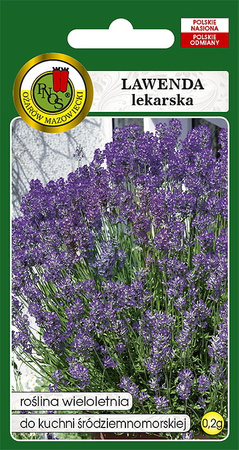- Perennial, melliferous, ornamental and medicinal plant. It has a compact, bushy clump shape. This small shrub with woody stems reaches a height of 15-60 cm.
Perennial, melliferous, ornamental and medicinal plant. It has a compact, bushy clump shape. This small shrub with woody stems reaches a height of 15-60 cm. The leaves of lavender are very narrow, grey-green in color, 2-5 cm long. The flowers are small, light blue in color and strongly scented. Lavender in the garden is suitable for path borders, flower beds, terraces and balconies, and rock gardens. Lavender needs a sunny position and permeable soil with a high calcium content. It does not like wet ground and drafts. Due to its scent, lavender attracts bees, bumblebees and butterflies, and repels mosquitoes and aphids.
One of the basic lavender care procedures in the garden is pruning. Young, unbranched lavenders are shortened by half in the first year of growth. Such cutting will cause them to produce many new shoots at the base, creating a dense crown. In spring, in March or April, sick, broken, overgrown or damaged lavender branches are pruned. The remaining ones are pruned to give the plant a regular, bushy shape and stimulate the formation of new shoots. Lavender should be pruned regularly every year to prevent it from becoming excessively woody. Systematically formed plants will be compact and dense, and therefore less susceptible to the destructive effects of snow.
Lavender has relaxing properties for the body and mind. It is a great sedative and a good remedy for tension headaches, migraines, palpitations and insomnia, it helps the digestive system, relieves abdominal bloating, nausea, digestive indigestion, and increases appetite.
- Sowing: April-June/September-October
- Planting: July-September
- Spacing: 40x60 cm
- Height: 50-70 cm
- Flowering: June-October
- Position: sunny
- Number of seeds: 1050-1100 pcs. in gram
- Packaging: 0.2g








